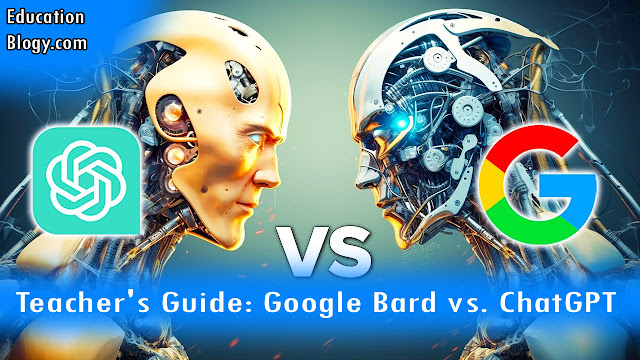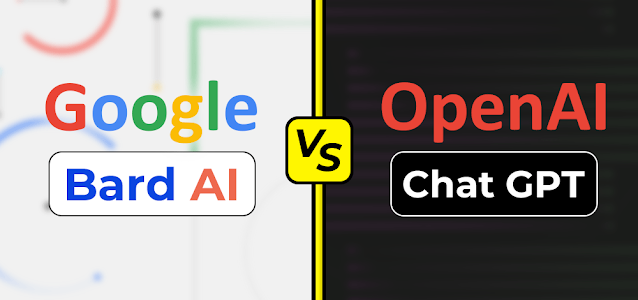A Comparison of Google Bard and ChatGPT
As an educator, it's important to stay updated on the latest technological advancements that can enhance the learning experience for your students. In recent years, artificial intelligence (AI) has made significant progress in the field of natural language processing, leading to the development of advanced language models like Google Bard and ChatGPT. These AI-powered systems can assist in various educational tasks, including generating text, answering questions, and providing interactive learning experiences. In this guide, we will compare and contrast Google Bard and ChatGPT to help you understand their capabilities and potential applications in the classroom.
Comparing Google Bard and ChatGPT: AI Tools for Education
 |
| Teacher's Guide: Google Bard vs. ChatGPT |
Understanding Google Bard:
Google Bard is an AI language model developed by Google that focuses specifically on generating poetry. It has been trained on a vast amount of poetry from various sources, enabling it to compose original poems in different styles and themes. Google Bard is designed to mimic the creativity and linguistic nuances of human poets, providing an engaging and artistic experience. New AI-Powered Bing Easily Access Now Mobile Apps
Understanding ChatGPT:
ChatGPT, on the other hand, is an AI language model developed by OpenAI that excels in generating human-like conversational responses. It has been trained on a diverse range of internet text, allowing it to understand and generate responses to a wide array of topics. ChatGPT is designed to simulate conversation with a human and can be used for tasks such as answering questions, providing explanations, and engaging in interactive dialogue.
Generating Text:
Both Google Bard and ChatGPT excel at generating text, but they have different focuses. Google Bard specializes in generating poetic compositions, while ChatGPT is designed to generate conversational responses. If your goal is to explore poetry and encourage creative writing, Google Bard can be a valuable tool. However, if you're looking for a more general-purpose AI assistant that can answer questions and engage in interactive discussions, ChatGPT would be a better choice. What Is ChatGPT And How Does It Work
Classroom Applications:
Language and Literature: Google Bard can be used as a source of inspiration for students to explore different poetic styles, themes, and literary devices. It can generate original poems that can be analyzed and discussed in the classroom. ChatGPT, on the other hand, can assist students in understanding complex texts, answering questions about literature, and even engaging in virtual literary discussions.
Language Learning: Both Google Bard and ChatGPT can be utilized to enhance language learning. Google Bard can provide examples of poetry in various languages, helping students explore different cultures and develop their language skills. ChatGPT can engage in conversations with students, acting as a language practice partner and providing feedback on their writing or speaking skills.
Research and Information Retrieval: ChatGPT's ability to understand and generate responses to a wide array of topics makes it a valuable tool for research and information retrieval. Students can ask questions related to their research topics, and ChatGPT can provide relevant information, explanations, and even suggest additional resources.
ChatGPT Tutorial: A Beginner's Guide to Chat GPT
Ethical Considerations:
While AI language models like Google Bard and ChatGPT offer exciting possibilities in education, it's important to consider ethical implications. These models are trained on large amounts of data from the internet, which may contain biases and inaccuracies. As an educator, it's crucial to encourage critical thinking and help students understand the limitations and potential biases of AI-generated content.
Both Google Bard and ChatGPT are powerful AI language models with unique capabilities. Google Bard focuses on generating poetry, making it ideal for creative writing and exploring different poetic styles. ChatGPT, on the other hand, excels at generating conversational responses and can be used for various educational tasks. By leveraging the strengths of these AI models, educators can enhance the learning experience, promote creativity, and engage students in interactive and immersive educational activities.
Both Google Bard and ChatGPT are powerful AI language models with unique capabilities.


